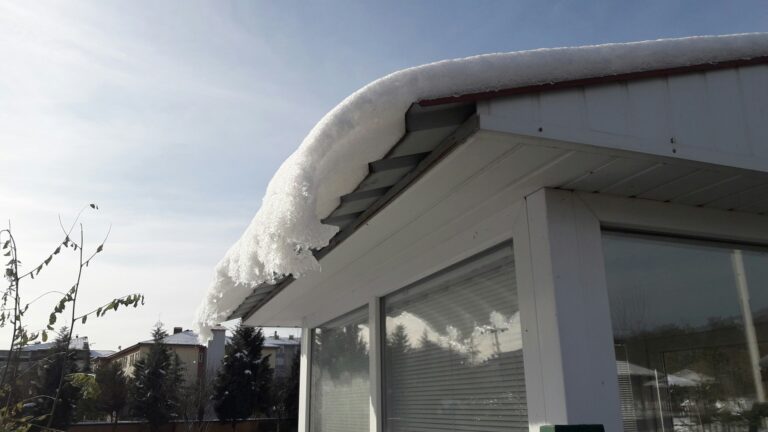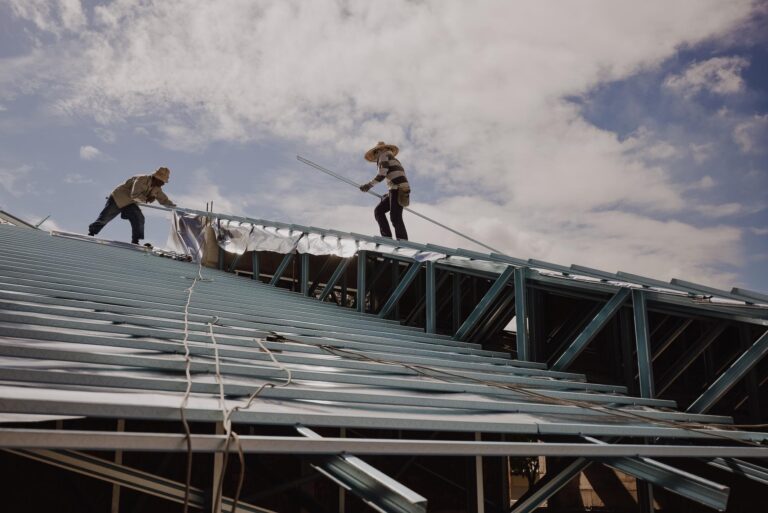Casper winters are long, cold, and full of surprises. That first heavy snow or icy wind can show up earlier than expected. If your metal roof isn’t ready, it could end up being more than just an inconvenience. Prepping your roof ahead of winter helps you avoid leaks, heat loss, and damage that’s hard to fix once the snow hits. It’s all about staying ahead of the weather before it causes bigger problems.
Metal roofing in Casper stands up well to tough weather, but it still needs some attention as winter draws near. From seams and screws to insulation and coatings, there are a few simple steps that help make your roof better prepared for the colder months. Whether your home is older or new, it’s worth giving your roof a solid check-up before the temperature drops.
Inspecting Your Metal Roof
Before winter sets in, it’s smart to take a close look at your roof. A routine inspection can help catch minor issues that snow and ice may make worse. This doesn’t mean going up there yourself with a ladder and flashlight. Getting it checked out by a local roofing expert cuts the risk and gives you peace of mind.
Here are a few things to keep an eye out for when getting your roof checked:
– Loose or missing fasteners that can allow moisture in
– Panels that appear bent, shifted, or out of place
– Gaps along seams, edges, or joints
– Areas with visible rust or chipped coating
– Debris buildup, especially near drains or roof valleys
Metal expands and contracts with temperature swings, which can slowly loosen screws and pull panels away from flashing. If that’s not caught early, water could seep under and freeze, leading to larger splits and visible damage. In places like Casper where winters can last well into April, it’s smart to make sure your roof can outlast the season.
One homeowner in Casper noticed their electric bill spike during a cold snap. Turns out a slipped panel near the vent stack had created a draft, pulling out warm air faster than the furnace could keep up. It was a small problem with a big impact. A quick inspection ahead of winter could’ve caught it early.
Cleaning And Clearing Debris
Once the roof’s condition has been checked, the next step is giving it a good cleaning. Even if your roof looks fine from the ground, small things like sticks, leaves, and dirt can collect in places you don’t notice. Over time, piles of wet leaves or packed-in branches can trap moisture and clog drainage spots.
Here’s what a thorough cleaning should include:
– Clearing away all branches, leaves, and other debris sitting on the roof surface
– Flushing out gutters and downspouts to make sure water flows freely
– Checking behind chimneys, skylights, and HVAC units where debris tends to collect
– Removing dirt or residue around flashing and roof valleys
Standing water is one of the worst things for any roof, even metal. It can work its way into gaps and freeze overnight, causing metal panels to bow or separate. Clean gutters help water run off the roof instead of backing up and freezing at the base. Roof valleys where two slopes meet build up snow and ice faster than flat areas, so keeping them clear matters even more. Don’t forget to inspect the downspouts too. Blocked spouts can cause water to overflow and run down the side of your home, taking paint, siding, or trim with it.
Keeping the roof clear also helps reduce the weight pressing down on it during heavy snowstorms. That matters more if your home has a flatter pitch. Snow builds up fast in Casper, and soaking-wet leaves or hidden junk only adds more weight.
Making Necessary Repairs
Once you’ve checked your roof and cleared away all debris, it’s time to deal with any damage. Small problems like loose panels or missing screws might seem harmless at first, but when freezing temperatures, snow, and ice show up, they can become a lot worse. Something as simple as a gap around a panel seam could end up letting in water, which then freezes and forces the seam wider apart.
You might see things like:
– Tiny cracks or tears in the flashing
– Nail heads or fasteners that sit too high or have backed out
– Panels that rattle or shift in strong wind
– Dents from hail or fallen tree limbs
– Lifted corners where wind has pulled the edge of a panel up
These kinds of damage often grow under the pressure of ice or persistent wind. For example, if a lifted panel edge isn’t fixed before winter hits in Casper, small ice dams can build underneath it. As the ice expands, it could dent the panel or pull at fasteners, and now you’re looking at a larger repair mid-winter.
Fixing these problems early keeps your roof sealed tight through every snowstorm. Repairs aren’t just about safety either. They also help preserve the energy performance of your home’s insulation system. A damaged area that lets warm air escape can cause constant heating issues, which you’ll see on your monthly energy bill.
It’s best to leave bigger repairs or anything near skylights or HVAC units to professionals. That reduces the risk of more damage and keeps you off slippery roof sections during seasonal prep.
Adding Protective Coatings And Insulation
Weather protection on a metal roof does more than just repel water. Protective coatings help guard against rust, wind wear, small hail, and sun damage. Older metal roofs especially benefit from a fresh coat before harsh conditions return. In a place like Casper, where winter sticks around, protecting the surface of your roof with a strong, sealant-based coating can make snow removal easier and help it stay clean longer.
For homes that were built more than a decade ago, it’s also a good idea to assess the insulation below the roof. Attic insulation helps keep your heating system running efficiently and prevents heat from escaping through the top of the house. When that warm air hits the underside of the cold metal roof, it can form condensation. Over multiple days, that moisture builds up and may affect rafters, sheathing, or fasteners.
Some helpful materials to consider for conditions like Casper’s:
– High-solids elastomeric coatings for surface protection
– Closed-cell spray foam insulation placed under the roof deck
– Radiant barriers or foil-faced batt insulation for added resistance
– Ice and water barriers along edges in areas known for ice buildup
All of these products support the performance of your metal roof during long freezes and heavy snow events. While coatings protect from outside elements, better insulation works from the inside by keeping warm air where it’s supposed to be. The combination of both reduces strain on your HVAC system and keeps your roof performing like it’s supposed to.
Staying Prepared For Winter Weather
Having your roof ready doesn’t mean the work stops once there’s snow on the ground. Regular winter checkups can help you spot developing issues before they become expensive emergencies. Even after winter has fully set in, there are simple maintenance habits that can keep metal roofing in Casper functioning like it should.
Try sticking to a few routines:
– Do quick roof checks after big snowfalls, looking for ice clumps or dips forming
– Use a roof rake for snow buildup on lower edges if it starts piling up too high
– Pay attention inside your home for signs like ceiling spots or increased drafts
– Walk the perimeter and inspect soffits and overhangs for icicles or water trails
– Listen during windy days for rattling that might point to a loose panel or vent
Avoid stepping on the roof once temperatures drop, especially with frost or ice present. Even though metal roofing is slip-resistant in dry conditions, snow makes it hazardous fast. When you think something needs a closer look, especially after strong wind or blizzard-level snow, it’s best to have a roofing professional take a look.
Proactive winter care helps stretch the life of your roof by years, and that starts with staying alert, even as the temperature drops further. A little attention now can save you from headaches later.
Keep Your Roof One Step Ahead Of Winter
Each fall, a small bit of effort can make a big difference in how your roof holds up through a long and wild season. Metal roofing in Casper may be tough, but combining regular inspections, smart repairs, and winter-focused upgrades gives it the backup it needs.
Whether it’s your first winter in Casper with a metal roof or you’ve had one for years, the key is staying ahead of the season. Take action during these cooler fall weeks, before the snow settles in for good. Catching small issues now and giving your roof the support it needs helps protect your home and keeps your spaces warm and dry all winter long.
Make sure your roof is fully ready for the challenges of winter. Learn more about how to boost the performance and reliability of your metal roofing in Casper. Trust Acme Sheet Metals Inc to deliver expert guidance and reliable solutions that help keep your home protected when the temperatures drop.



